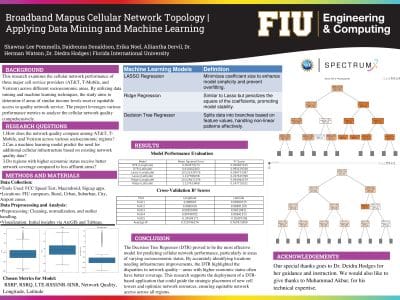Authors
Shawna-Lee Pommells, Daidreuna Donaldson, Erika Noel, Alliantha Dervil, Dr. Herman Watson ,Dr. Diedra Hodges
Abstract
In this study, we investigated the inequality in cellular network performance among three major providers (AT&T, T-Mobile, and Verizon) across different socioeconomic regions. Utilizing data mining and machine learning techniques, we aimed to understand how network quality correlates with economic status and to predict geographical areas in need of infrastructure improvements. Data was collected using mobile phones at various locations, including campuses and urban areas, and analyzed using Decision Tree Regression, Lasso, and Ridge Regression models. The Decision Tree Regressor showed the best accuracy in predicting network performance, particularly in identifying specific locations that would benefit from enhanced cellular infrastructure. Our findings reveal significant variations in network quality correlated with socioeconomic status, indicating that more affluent areas typically experience better service. The study shows the potential of machine learning in aiding telecommunication companies to strategically enhance network coverage and ensure equitable access to high-quality cellular services. This approach not only addresses service disparities but also assists in the most effective placement and resource allocation of new cell towers.

